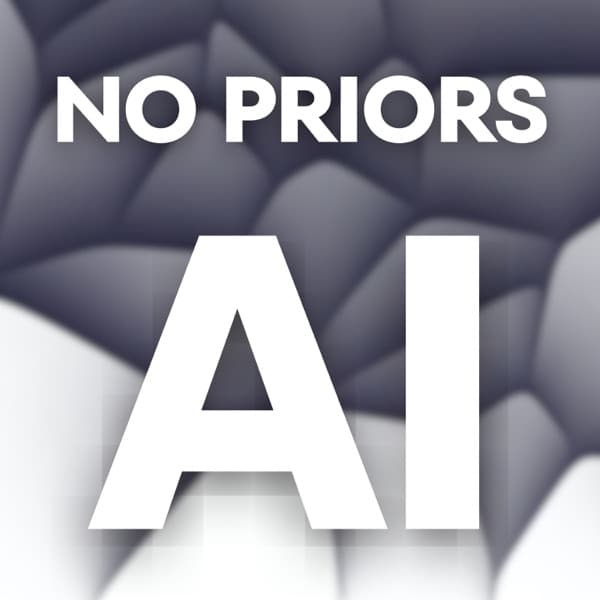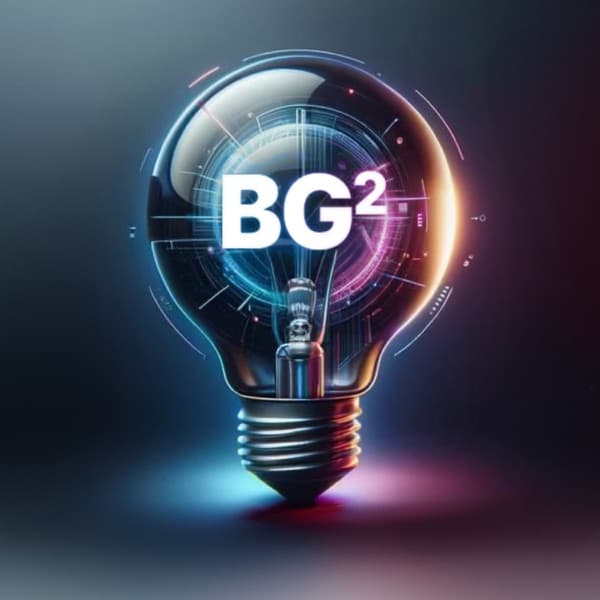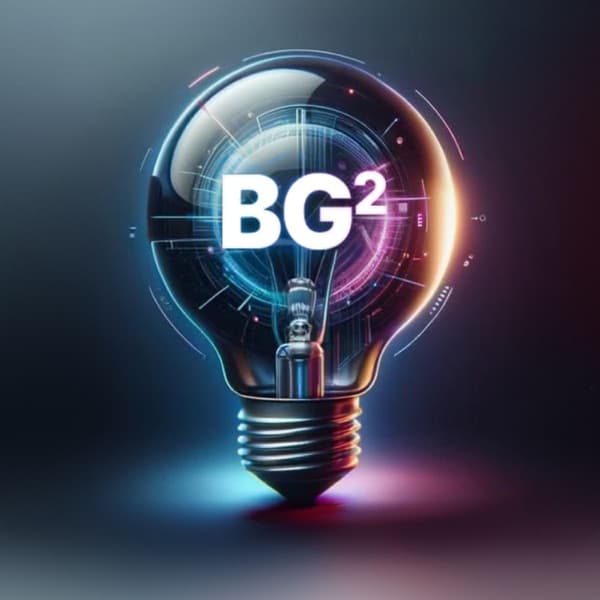Fireship: The video discusses 13 technology trends for 2025, highlighting advancements in AI, robotics, and quantum computing, while also addressing potential impacts on jobs and the economy.
a16z Podcast: The discussion focuses on A16Z Crypto's 14 big ideas for 2025, highlighting innovations like stablecoins, crypto app stores, and infrastructure reuse.
Fireship - The amazing, but unsettling future of technology...
The video explores the rapid advancements in AI, particularly reasoning models like OpenAI 03, which could threaten white-collar jobs, especially programming. Despite skepticism about its capabilities, AI agents are expected to become prevalent in enterprises, automating tasks like security. Robotics is also advancing, with companies like Tesla and Nvidia developing humanoid robots for industrial use. The tech job market remains volatile, but leveraging AI can enhance productivity for programmers. Quantum computing is progressing, with Google's Willow chip reducing error rates, though practical applications are still developing. The video also discusses the potential for brain chips to enhance human capabilities and the ongoing challenges in VR and AR adoption. Additionally, it highlights the legal and economic implications of tech monopolies and the growing anti-cloud movement among businesses.
Key Points:
- AI advancements, like OpenAI 03, could replace many programming jobs, but skepticism remains about its true capabilities.
- AI agents are expected to automate various enterprise tasks, potentially reducing the need for human workers.
- Robotics is advancing, with humanoid robots being developed for industrial use, indicating a shift in labor dynamics.
- Quantum computing is progressing, but practical applications are still in development, with concerns about cryptography.
- The tech job market is volatile, but leveraging AI can enhance productivity and offer opportunities for skilled programmers.
Details:
1. 🔮 2025 Tech Predictions: A Wild Ride Ahead
- Brain chips were installed in real humans, marking a significant advancement in neurotechnology.
- Tech monopolies experienced significant disruptions, suggesting a shift towards more competitive markets.
- A massive crypto scam by Hawk TW highlighted ongoing security challenges in the cryptocurrency space.
- Artificial superintelligence did not materialize, continuing a trend of unmet expectations in AI development.
- The Linux desktop platform, despite predictions, did not gain significant mainstream traction again.
- 2025 is anticipated to be even more dynamic, with 13 technology trends that could have substantial financial or emotional impacts.
2. 🤖 AI Breakthroughs and Limitations
- OpenAI 03 has been released, showcasing superior programming capabilities and marking a significant leap in AI technology.
- This model is notably the first to perform well on the ARC AGI benchmark, which measures a model's ability to think, invent, and reason like a human.
- The ARC AGI benchmark is critical for assessing AI's reasoning capabilities, which could dramatically influence future AI development.
- These advancements suggest potential for AI applications in complex problem-solving and creative tasks, highlighting its growing role in technology and industry.
3. 🧠 AI Agents Revolutionizing the Workforce
- Current AI models like OpenAI's are costly, with each task potentially costing thousands of dollars in computing resources, although efficiency is expected to improve over time.
- Despite the hype, AI fails in solving simple tasks that humans can easily handle, raising skepticism about claims of achieving Artificial General Intelligence (AGI).
- AI agents are being hyped as a new buzzword in 2025, with companies looking to leverage these agents to boost stock prices.
- An AI agent is essentially a large language model with the capability to interact with its environment, analyze data, and take actions autonomously.
- AI agents have potential applications such as managing security systems more efficiently than human guards, by automatically detecting anomalies and responding with robotic solutions.
- AI agents marketed towards enterprises, like Devon, are designed to replace programmers, indicating a possible reduction in programming jobs by 2025.
- The economic impact of AI agents includes both potential job displacement, particularly in programming, and the creation of new roles in AI maintenance and oversight.
- AI agents are applied across industries such as security, healthcare, and finance, providing improved efficiency and cost savings, though they pose challenges in terms of ethical considerations and potential biases.
- The development of AI agents is a progression from large language models, focusing on enabling autonomous decision-making and environment interaction, representing a significant shift in AI capabilities.
4. 🚀 Robotics and Emerging Tech: A New Frontier
4.1. Advancements in Robotics
4.2. Trends in the Tech Job Market
5. 🧠 Brain Innovations and VR Challenges
5.1. Neuralink and Brain Technology Advancements
5.2. Challenges and Developments in VR and AR
6. 🔬 Quantum Leaps and Programming Trends
6.1. Quantum Computing Advancements
6.2. Programming Language Trends
7. 💰 Crypto Surges and Economic Speculations
7.1. JavaScript Frameworks and AI-Powered Tools
7.2. Bitcoin and Economic Predictions
7.3. AI-Powered Altcoins and Market Impact
7.4. Influence of Political Leaders on Crypto and Tech
8. 🏛️ Tech Giants Under Scrutiny and Market Shifts
- The tech industry, traditionally boosted by low interest rates, now faces tighter monetary policies projected to continue into 2025, potentially necessitating a major market crash for rates to drop significantly again.
- Governments across the globe are actively challenging the dominance of tech giants like Google, Meta, and Amazon through antitrust lawsuits. Google has already been convicted as a monopolist and faces the possibility of losing its Chrome browser, while Meta is scheduled for trial in 2025.
- Despite these legal challenges, major tech companies are likely to maintain their dominant positions in the market for the foreseeable future.
- A notable trend is the rise of an anti-cloud movement among businesses seeking alternatives to AWS, GCP, and Azure. Some companies find it more cost-effective to operate virtual private servers or host physical servers on-premises.
- There is an increasing awareness that cloud services may not be necessary for all applications, particularly for hosting simpler websites, prompting businesses to reassess their cloud strategies.
9. 🌟 Embracing Tech Changes: Lessons Learned
- Identify and focus on 13 critical technology trends that are expected to shape the landscape by 2025, providing a roadmap for strategic planning.
- Prepare for diverse scenarios including financial success, job loss, or technological obsolescence by creating adaptable plans and contingencies.
- Strengthen and maintain professional networks as these connections are pivotal in adapting to and thriving amidst changes in the tech industry.
a16z Podcast - Crypto Trends for 2025: Stablecoins, App Stores, UX, and More

The conversation explores A16Z Crypto's 14 big ideas for 2025, emphasizing the potential of stablecoins to revolutionize small business transactions by reducing transaction fees. This could significantly increase profit margins for low-margin businesses like coffee shops. The discussion also covers the emergence of crypto-specific app stores, such as Solana's Dapp Store, which offer alternatives to traditional app stores and could drive crypto adoption. Additionally, the conversation highlights the importance of reusing existing infrastructure in crypto development to save time and resources, allowing developers to focus on product differentiation. The overarching theme is the maturation of the crypto industry, with a focus on improving user experience and integrating crypto into mainstream applications without emphasizing technical jargon.
Key Points:
- Stablecoins can significantly reduce transaction costs for small businesses, potentially doubling profit margins.
- Crypto-specific app stores like Solana's Dapp Store provide alternatives to traditional app stores, facilitating crypto adoption.
- Reusing existing infrastructure in crypto development can save time and resources, allowing focus on product differentiation.
- The crypto industry is maturing, with improved user experience and integration into mainstream applications.
- Avoiding technical jargon can help mainstream crypto adoption by focusing on practical benefits.
Details:
1. 🎙️ Introduction to Big Ideas 2025 Series
- The series covers insights from various A16Z teams, including American Dynamism, healthcare, and fintech.
- A16Z Crypto will present 14 big ideas specifically dedicated to 2025.
- An entire episode will focus on A16Z Crypto's contributions.
2. 🔮 Crypto's Big Ideas for 2025
- Development of crypto wallets for AI agents to enhance secure transactions and interactions, potentially revolutionizing digital economics and personal data management.
- Emergence of decentralized chatbots to improve user privacy and data ownership, offering a secure alternative to centralized data systems.
- Implementation of proof of personhood to verify identity without compromising user data, addressing privacy concerns and enhancing trust in digital interactions.
- Growth of prediction markets to leverage collective intelligence for decision-making, providing new tools for risk management and strategic planning.
- Introduction of crypto app stores to provide decentralized platforms for application distribution, reducing dependency on traditional app stores and encouraging innovation.
3. 📈 Web3's Future Potential
- Bitcoin reached all-time highs above $100,000, showcasing strong market potential for Web3 technologies.
- The Web3 team predicts substantial developments in the coming year, indicating growth opportunities in the sector.
- Emerging Web3 technologies, such as decentralized finance (DeFi) and non-fungible tokens (NFTs), are driving innovation and attracting investment.
- Web3's future potential is bolstered by the increasing adoption of blockchain technology across various industries.
- Enhanced security and transparency offered by blockchain are key factors in Web3's growing appeal.
- The shift towards decentralized platforms is expected to transform traditional business models.
4. 🌐 Exploring A16Z's 50 Big Ideas
- Stay updated with Web3 and next-generation internet trends via Web3 with A16Z, which provides an in-depth look into transformative technologies shaping the future.
- Access detailed insights on 50 big ideas, including 14 from the crypto sector, at a16z.com/big-ideas, which serves as a valuable resource for understanding emerging trends and strategic innovations.
5. 🔍 Unveiling A16Z Crypto's Insights
- A16Z Crypto underscores the critical role of Web3, indicating its strategic importance in shaping future technological landscapes.
- The firm highlights crypto trends as a central focus, suggesting significant potential and influence in forthcoming strategies and innovations.
- Their annual big ideas list for 2025 prominently features Web3 and cryptocurrency, reflecting anticipation for transformative impacts in these areas.
- A16Z’s emphasis on these technologies points towards a broader industry shift, aligning with emerging patterns in digital assets and blockchain adoption.
6. 💡 Tech Trends and Innovations
- The team identified 14 tech trends this year, up from 9 the previous year and 7 the year before, indicating a growing recognition of emerging technologies.
- Focus areas include distribution and discovery, highlighting the importance of understanding where the next wave of users will originate from.
- The insights emphasize how developers can enhance their strategies and decision-making processes to better align with these trends.
- One key trend is the rise of AI-driven solutions, which have increased efficiency and innovation across sectors.
- Another trend is the shift towards personalized user experiences, which has improved customer engagement metrics significantly.
- The growing importance of cybersecurity in tech adoption is noted, with a 30% increase in demand for secure solutions.
- Cloud computing continues to dominate with an observed 40% increase in enterprise adoption, driving scalability and flexibility.
- The emphasis is on developers leveraging these trends to innovate and remain competitive in a rapidly changing landscape.
7. 👥 Key Guests and Discussions
7.1. Guest Discussions on Infrastructure and User Experience
7.2. Meta Commentary and Disclaimers
8. 💬 Stablecoins: Market Fit and Challenges
8.1. Stablecoin Market Fit
8.2. Challenges in Stablecoin Adoption
9. 🏪 Stablecoins in Retail and Business
- Small businesses face high transaction costs from credit card companies, losing up to 2% per transaction, which could otherwise boost their profit margins.
- Credit card fraud protection benefits consumers but adds little value to in-person retail transactions, where stablecoins could reduce costs.
- A $1.50 coffee transaction can cost up to 30 cents in fees, disproportionately affecting small businesses' profits.
- Businesses may start promoting stablecoins to customers as a method to avoid interchange fees and increase their bottom line.
- Local brands and retailers might lead the adoption of stablecoins due to their existing customer relationships.
- Stablecoins could fulfill the early vision of using cryptocurrency for everyday transactions, like buying coffee, and small businesses could be early adopters.
10. 📱 Crypto App Stores and Distribution
10.1. Challenges with Existing App Stores
10.2. Emergence of Crypto-Specific App Stores
10.3. Concerns and Opportunities
11. 🔗 Overcoming App Store Barriers
11.1. Blockchain Overproliferation and Bridging
11.2. Curation and NFT Communities
11.3. App Store Fees and Crypto Permissionlessness
11.4. Blockchain as Platform and Publisher
12. 🚀 Expanding Blockchain Ecosystems
12.1. Competing with Established Giants
12.2. Challenges in User Migration
12.3. Transitioning Users On-Chain
13. 🔄 Converting Crypto Holders to Users
- Coinbase has approximately 100 million verified users who have transacted at some point.
- Only 8 to 10 million users are active daily or monthly, indicating a large proportion of dormant users.
- The number of active users on Coinbase recently increased from 10 million to 18 million, representing about 10% of the total user base.
- The challenge is converting these dormant account holders into regular active users who transact on-chain.
- To engage dormant users, Coinbase could implement personalized engagement strategies, such as customized notifications and educational content about market opportunities.
- Incentive programs, like transaction fee discounts or reward systems for frequent transactions, could encourage more regular user activity.
- Analyzing user behavior data to identify common barriers to engagement can help tailor strategies to specific user segments.
- Offering seamless integration with popular financial services could reduce friction and encourage users to transact more frequently.
14. 📊 State of Crypto: Usage and Potential
- Only 5 to 10% of people who own crypto are actively using it, indicating a significant gap in utilization.
- This low active usage suggests that crypto owners are mostly dormant, akin to having advanced technology without leveraging its full potential.
- The underutilization presents an opportunity to activate these dormant users, potentially driving growth and adoption of crypto transactions.
- Reasons for low active usage include lack of user-friendly platforms, regulatory uncertainties, and limited merchant acceptance.
- Strategies to increase active usage could involve enhancing user experience, providing clearer regulatory frameworks, and expanding merchant networks that accept crypto.
15. 🌟 Crypto as a Computing Movement
15.1. Crypto Readiness and Mainstream Adoption
15.2. Price Innovation Cycle
15.3. Past Crypto Engagement
15.4. Crypto Use Cases and Movements
15.5. The Potential of Crypto as a Computing Movement
16. 🏦 Stablecoins' Impact on Business Models
- Stablecoins have found product market fit, suggesting a readiness for broader adoption.
- For businesses, especially those operating on thin margins, stablecoins present a major opportunity to reduce credit card transaction fees, potentially boosting profitability.
- Widespread acceptance could be catalyzed by a large corporation adopting stablecoins, setting a precedent for others to follow.
- The current user experience (UX) for mainstream users is underdeveloped, highlighting a need for more intuitive and seamless interfaces that could abstract the complexities of cryptocurrency. Users might leverage stablecoins without being aware of it, similar to current digital payment systems.
17. 🔧 Reusing Infrastructure for Innovation
17.1. Current Infrastructure Trends
17.2. Benefits of Using Off-the-Shelf Infrastructure
17.3. Challenges and Considerations
17.4. Decision Making in Technology Adoption
18. 🔑 Hiding the Complexity of Crypto
18.1. Democratizing Crypto by Simplifying Complexities
18.2. Mainstream Adoption: Focusing on Benefits Not Jargon
18.3. Real-World Applications: Empowering Industries
19. 🌍 Cross-cutting Themes and Future Outlook
19.1. Intersection of AI and Crypto
19.2. Integration of Digital and Physical Worlds
19.3. Improvement in Technology Usability
19.4. Crypto's Position in Mainstream and Legal Frameworks
20. 📩 A16Z's Newsletter and Closing Remarks
20.1. A16Z's Newsletter
20.2. Closing Remarks
Included Channels
 All-In with Chamath, Jason, Sacks & Friedberg
All-In with Chamath, Jason, Sacks & Friedberg Lex Fridman Podcast
Lex Fridman Podcast Modern Wisdom
Modern Wisdom In Depth
In Depth Greymatter
Greymatter Latent Space: The AI Engineer Podcast
Latent Space: The AI Engineer Podcast a16z Podcast
a16z Podcast Lenny's Podcast: Product | Growth | Career
Lenny's Podcast: Product | Growth | Career How I Built This with Guy Raz
How I Built This with Guy Raz Lightcone Podcast
Lightcone Podcast No Priors AI
No Priors AI The Twenty Minute VC (20VC): Venture Capital | Startup Funding | The Pitch
The Twenty Minute VC (20VC): Venture Capital | Startup Funding | The Pitch BG2Pod with Brad Gerstner and Bill Gurley
BG2Pod with Brad Gerstner and Bill Gurley





